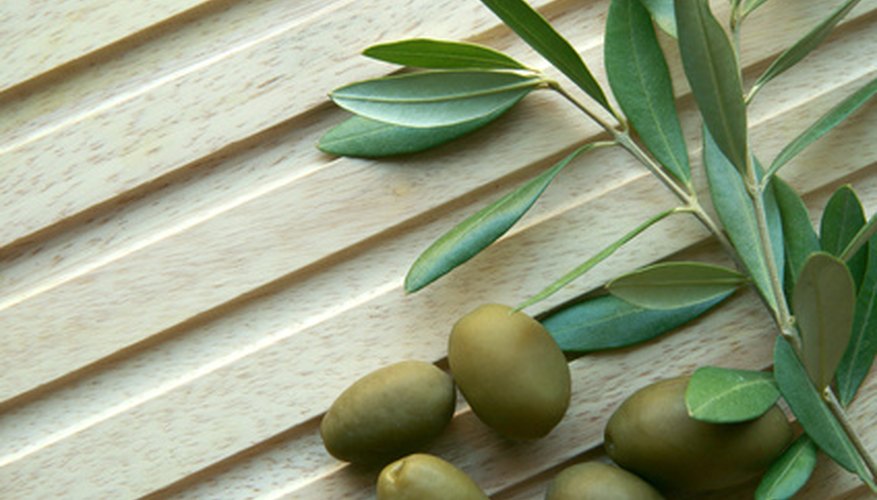The olive tree, according to Olive Oil Source, is one of the most-documented and most-cultivated trees in the history of the world. Olive trees can live for thousands of years in hospitable environments and, during the past several hundred years, have spread to New Zealand, Australia, Japan and North and South America. Despite their variety, olive trees have unique features that make them easy to identify and enjoy.
Examine the tree's leaves. An olive tree's leaves have a thick and leathery texture, a dark grey-green upper side, a silvery underside and teeth-like edges; they also grow to a length of 3 inches and a width of 1/2 to 3/4 inches. Keep in mind that a tree's genetics can be altered, which will change certain attributes of the leaves, but these are pretty consistent features of olive tree leaves. Olive leaves grow on opposite sides of the branch, directly across from each other.
- The olive tree, according to Olive Oil Source, is one of the most-documented and most-cultivated trees in the history of the world.
- Keep in mind that a tree's genetics can be altered, which will change certain attributes of the leaves, but these are pretty consistent features of olive tree leaves.
Closely observe the base of each leaf on the tree, which are often home to small, cream-coloured flowers in the spring and early summer. These flowers can be difficult to spot, as they are many times hidden by the large leaves.
Record the tree's shedding cycle. Olive trees, while evergreen, shed their leaves in the spring every two or three years and begin to regrow new leaves quickly after.
Measure the height of the tree. An olive tree can grow up to 50 feet high, often higher. Many growers, however, safely prune the trees to a more manageable height of about 20 feet, according to California Rare Fruit Growers, Inc. An olive tree's trunk is has a twisted, gnarled look.
- Closely observe the base of each leaf on the tree, which are often home to small, cream-coloured flowers in the spring and early summer.
- Many growers, however, safely prune the trees to a more manageable height of about 20 feet, according to California Rare Fruit Growers, Inc. An olive tree's trunk is has a twisted, gnarled look.
Pick one of the tree's olives, which should be a black-purple colour at its ripest point or a greenish brown beforehand.
